When it comes to achieving your dream home interior, knowing which interior design style suits your tastes the best can be overwhelming. Throw in ever-evolving styles and trends, and it can be downright confusing. That’s why learning what sets them apart is key to understanding which style you naturally gravitate towards.
Whether you’re looking for design inspiration to revamp your chic Toronto, ON, apartment, or furnish a newly remodeled Victorian-style house, we’ve got the guide for you. From French Country to Industrial, we’re breaking down 25 of the most popular interior design styles so you can achieve a cohesive design scheme and find the right style for you.
1. Traditional or Classic
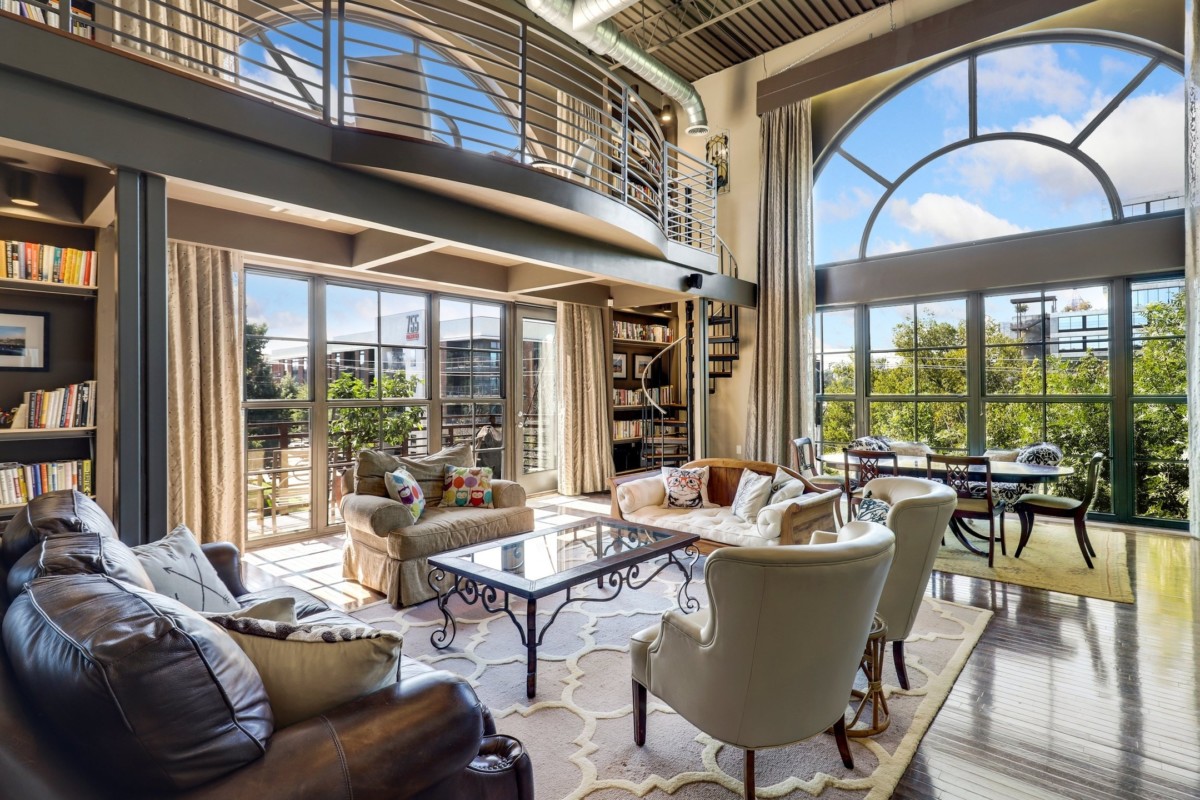
Timeless rather than trendy, the traditional or classic interior design style brings the focus back to the basics where comfort meets elegance. Traditional interior design combines uniformity and symmetry to create a balanced space, emphasizing a subdued color palette to tie everything together. Because it’s not devoted to a particular style or era, traditional interior design appeals to all ages and design aesthetics due to its emphasis on creating a comforting and familiar space.
2. Minimalist
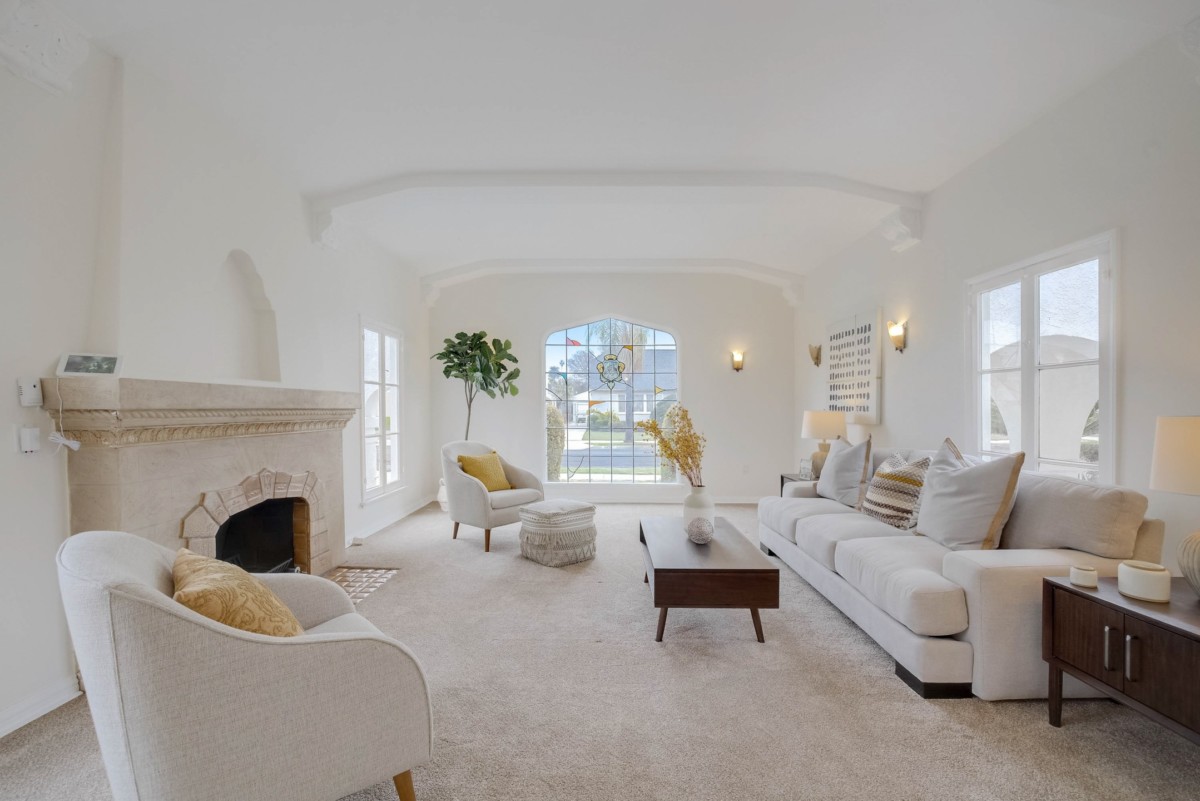
Known for its “less is more” design philosophy, the minimalist design style emphasizes clean, uncluttered, and bright spaces, omitting unnecessary embellishments and prioritizing functionality. This style is ideal for making small spaces appear larger and can easily be achieved without breaking the bank. The key to a minimalist home interior is to pare down decor, stick to simple furnishings, and use a concise color palette.
3. Maximalist
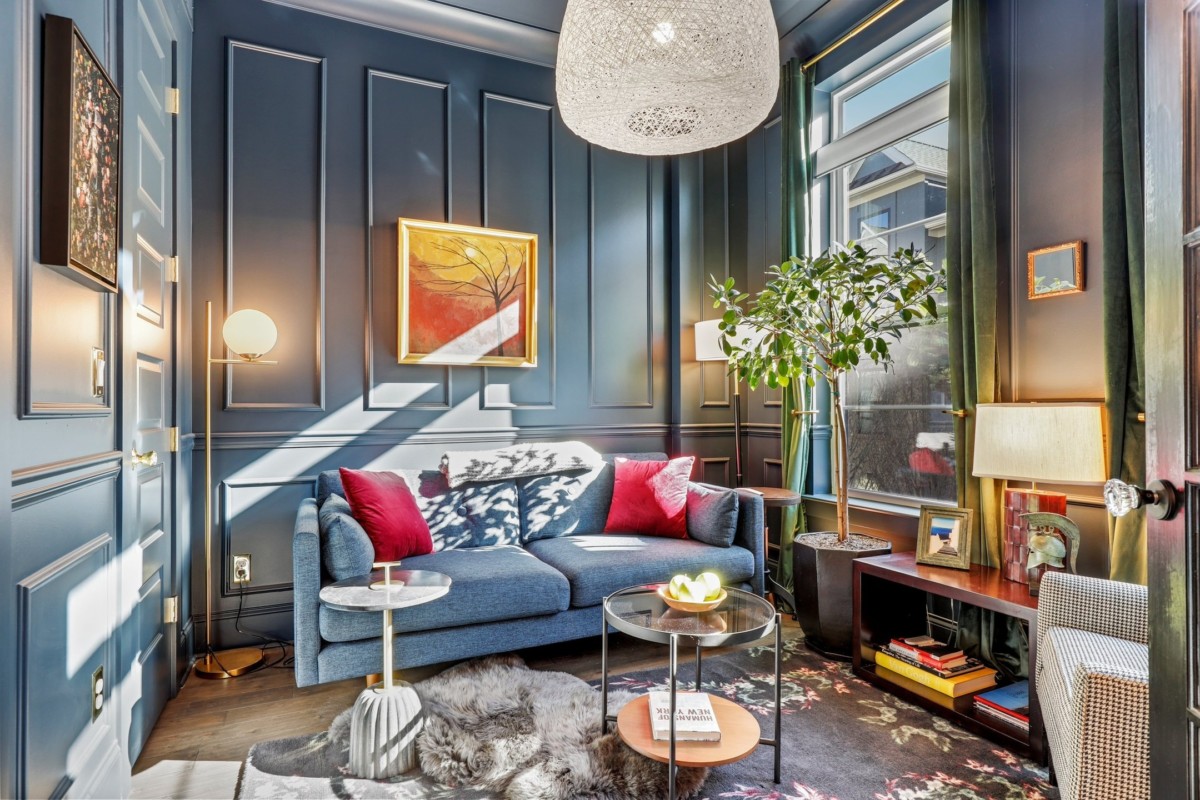
On the other side of the spectrum, the maximalist interior design style embraces a “more is more” design philosophy – think bold patterns, bright colors, textures, and interesting accessories. This design style has also inspired new waves of maximalism in the form of grandmillenial and cottagecore aesthetics, where old and new blend together into an eclectic mix of nostalgia. While the maximalist design style implies having a lot of stuff, the style is far from being messy and random. When striving to achieve a maximalist design style, the key is to keep decor curated and incorporate personalized accessories, family heirlooms, unique collectibles, or retro furniture.
4. Modern
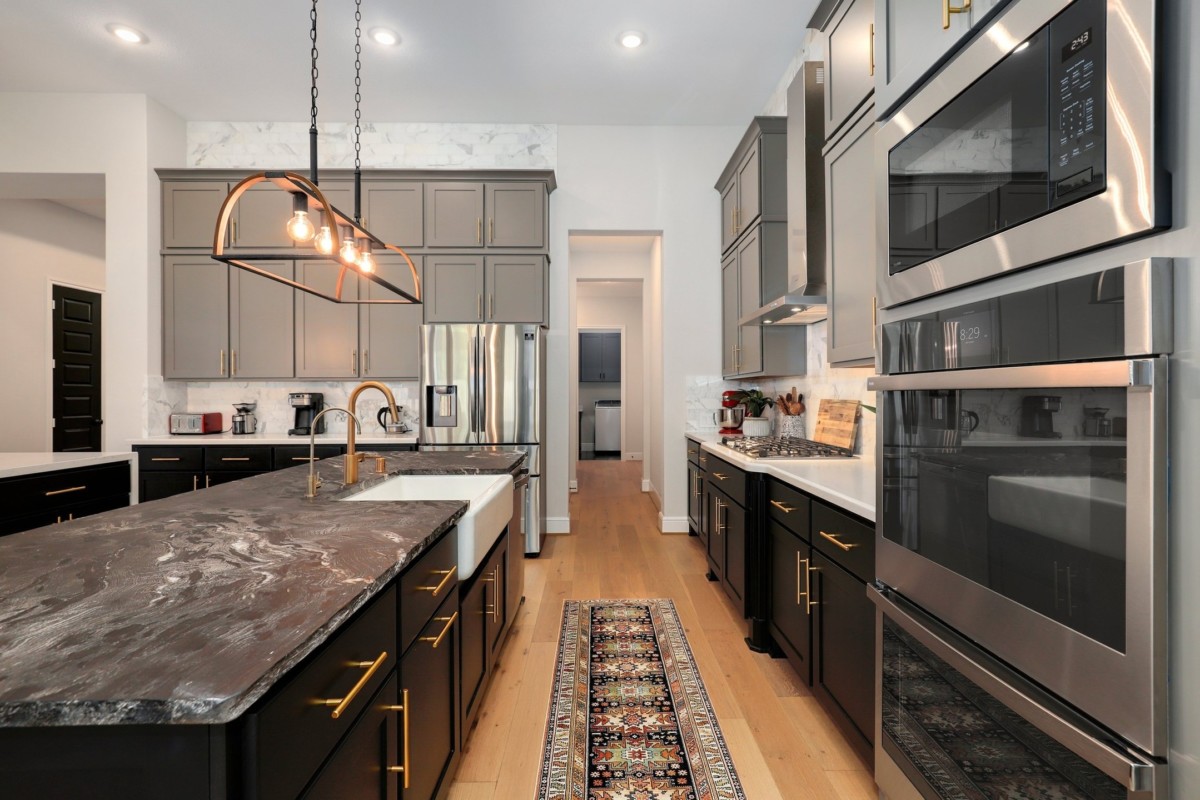
Modern design was developed by the German Bauhaus schools of design in the 1920s, whose design aesthetic centered on the belief that form should follow function. Since furnishings and decor should serve a practical purpose, the core idea of the modern style is to create simple, uncluttered spaces without heavy elements or ornate designs. This design style is easily recognizable by its clean lines, monochromatic and neutral color palette, natural materials, unfussy decors, and industrial materials, including glass, steel, and concrete.
5. Contemporary
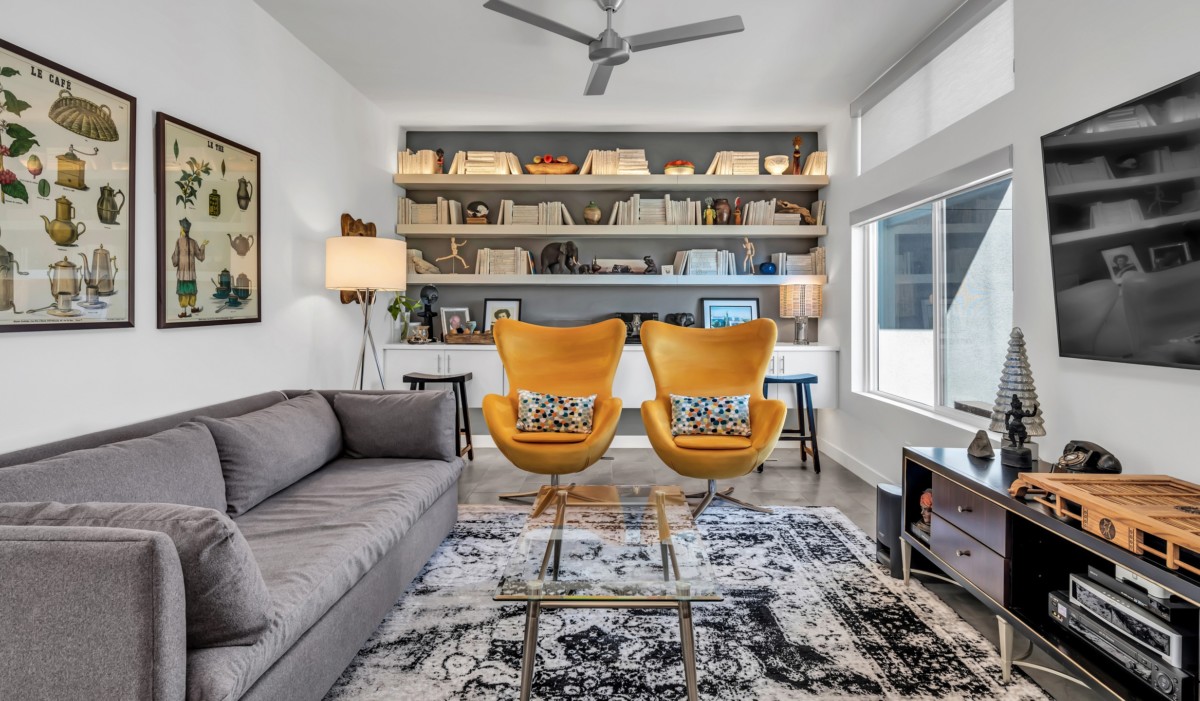
Not to be confused with the modern design style, contemporary interior design features of-the-moment design trends and decor. In contrast, modern interior design refers to the modernism movement that began in the early-20th century. The contemporary interior design style features clean lines, highlighting a building’s construction, and innovative and eco-friendly building materials, such as bamboo, cork, glass, and aluminum. By taking design elements from various styles, contemporary interior design is a highly versatile style that creates a look that withstands the test of time.
6. Transitional
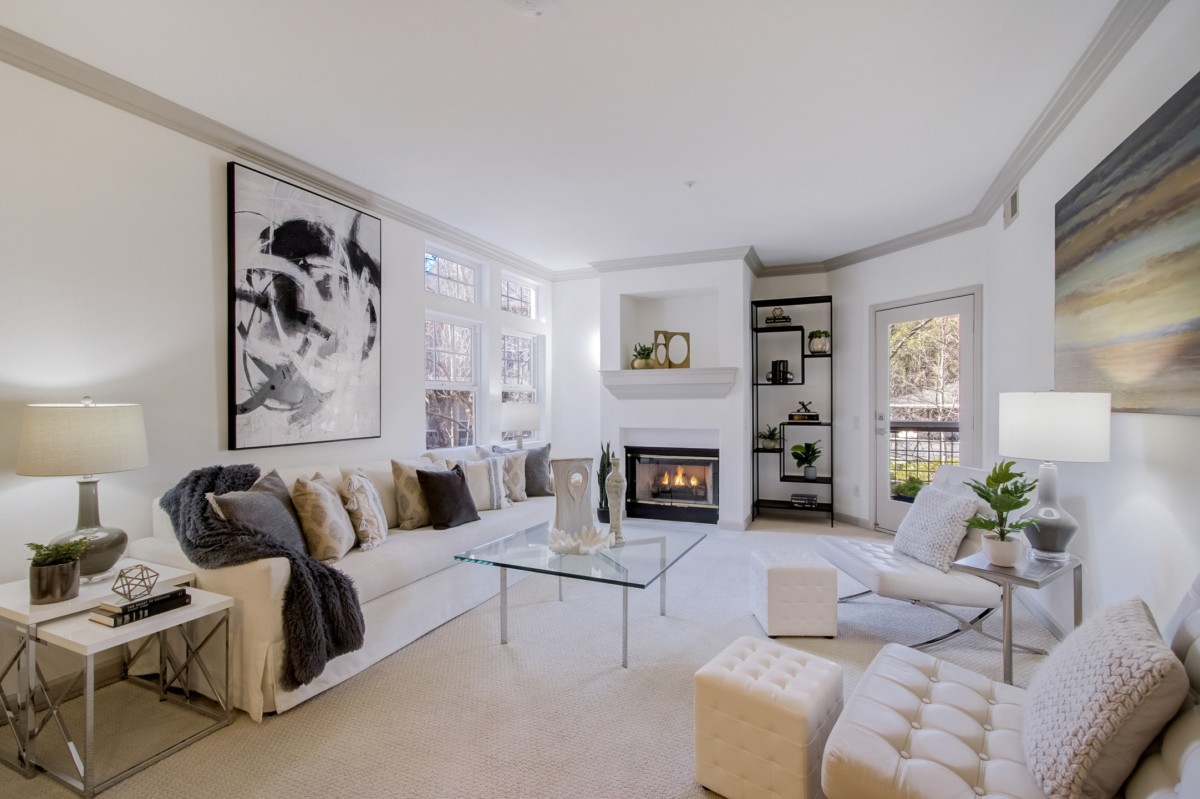
The transitional interior design style takes the best of traditional and modern interior design to create a space that’s both comfortable and elegant. Mixing these design styles offers the freedom to experiment with different elements that bring a cohesive, modern feel to a space that remains timeless. When looking to achieve a transitional design style, look for comfortable yet functional furnishings, a neutral color palette, and minimal accessories. The goal is to create a space that doesn’t feel stuffy or stark.
7. Eclectic
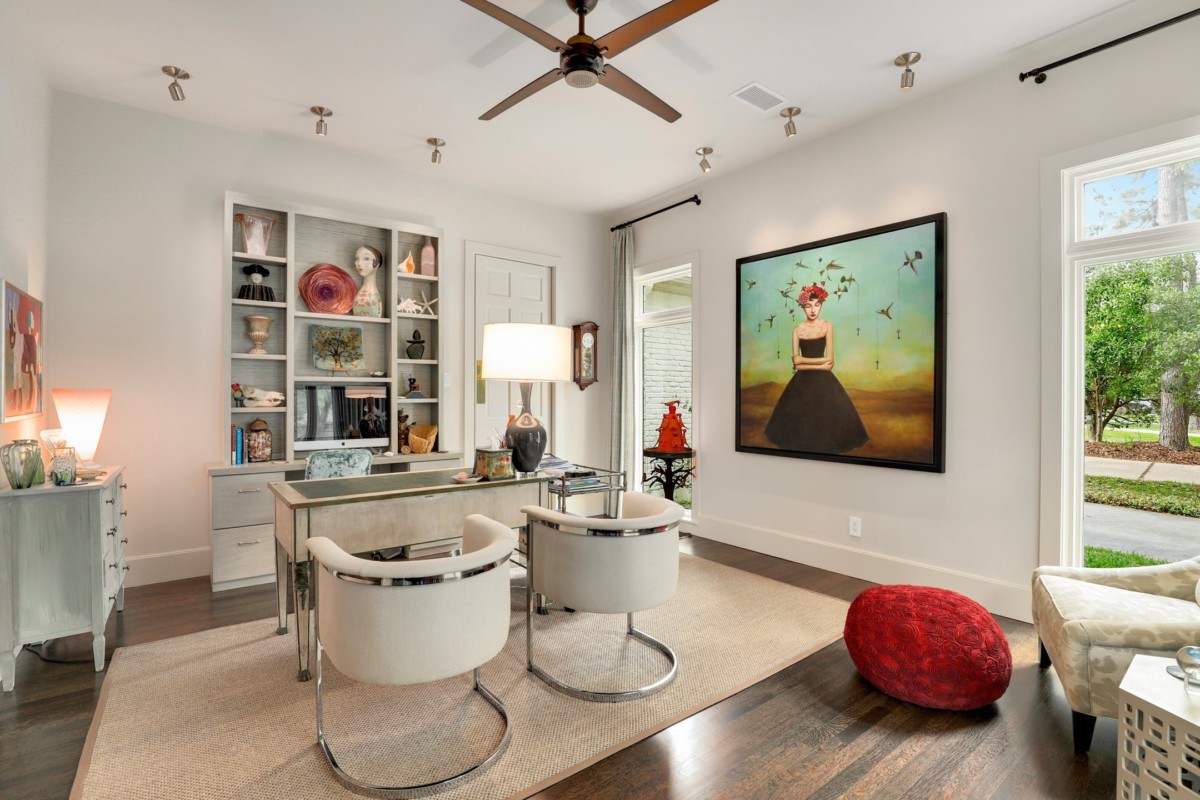
Stepping away from strict rules and trends, the eclectic interior design style incorporates elements from different periods and styles to create an effortlessly curated space. While it may seem like a random assortment of furnishings and decor, this interior design style is all about taking the best of each style and bringing them together into a unique mix. Taking cues from maximalism, eclectic interior design is all about filling a space with personality. Common characteristics of this style include displaying worldly decor, mixing vintage pieces with modern decor, and, most importantly, bold patterns and colors.
8. Mid-Century Modern
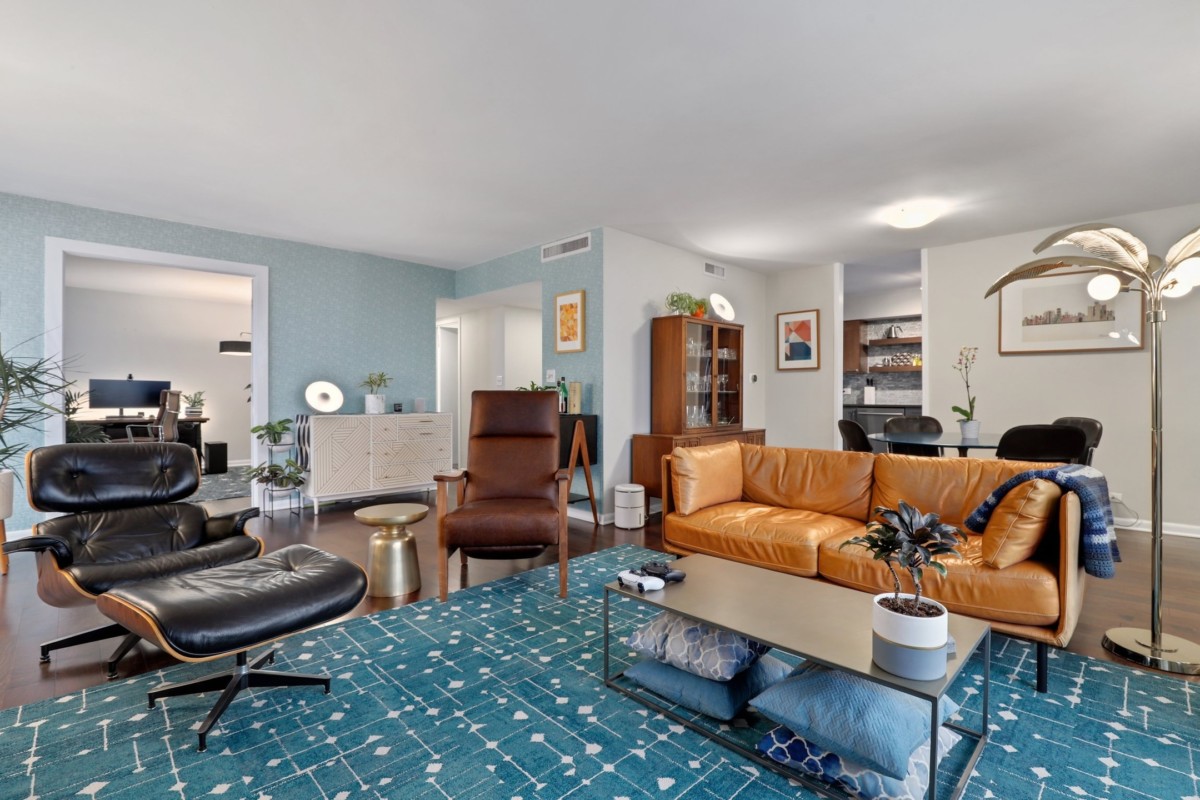
Popularized by the show “Mad Men,” mid-century modern interior design has seen a resurgence of interest in recent years. The style is distinguishable by its classic, understated look that focuses on clean lines, neutral tones, functional furnishings, and organic shapes. Like the minimalist design style, mid-century modern interior design follows the principle of “form follows function,” where spaces are kept open and uncluttered, and decor is kept to a minimum.
9. Bohemian
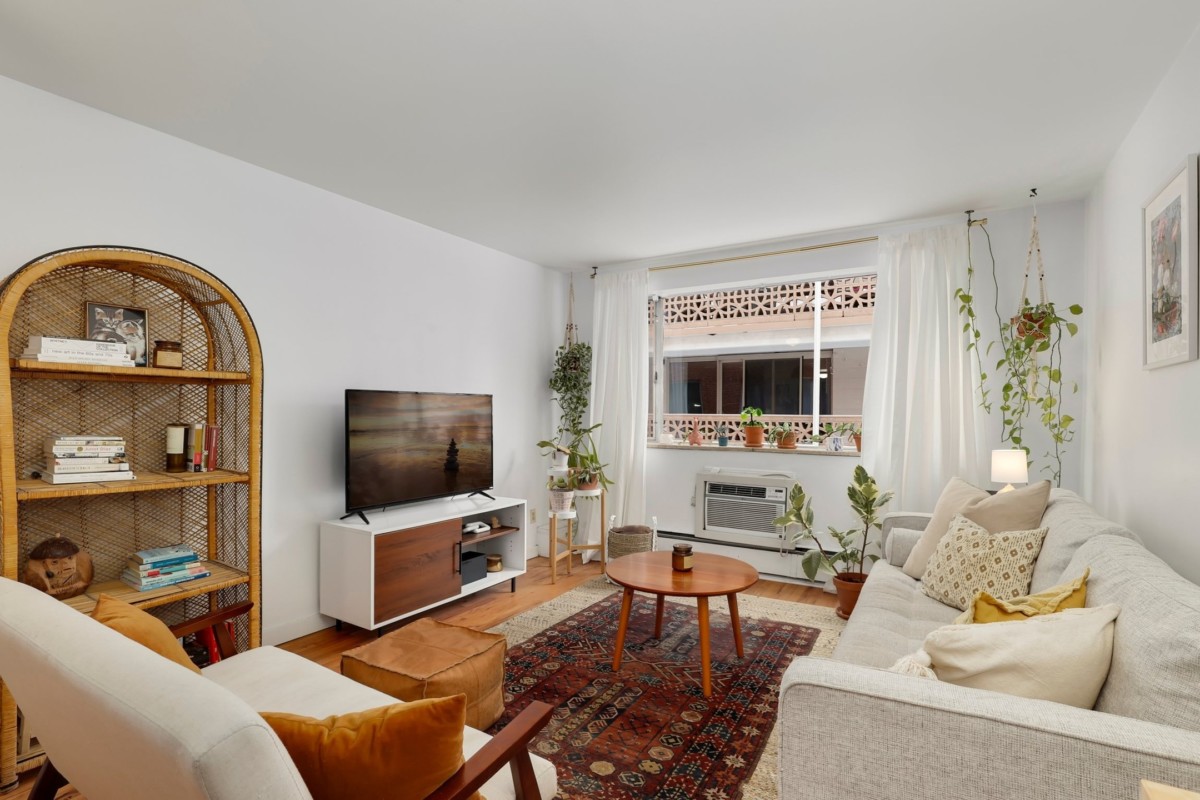
The Bohemian interior design style (or Boho) is characterized by a seamless mix of bright colors, bold patterns, and interesting textures. Common themes of this design style include warm, earthly colors with metallic and jewel-tone accents, layered rugs and dyed textiles from around the world, and natural materials. Unlike modern or minimalist interior design, the core of the bohemian interior design style is that it’s relaxed and personal. Similar to maximalist and eclectic interior design, there’s no such thing as “too much” when it comes to achieving this interior design style in your space.
10. Classic Farmhouse
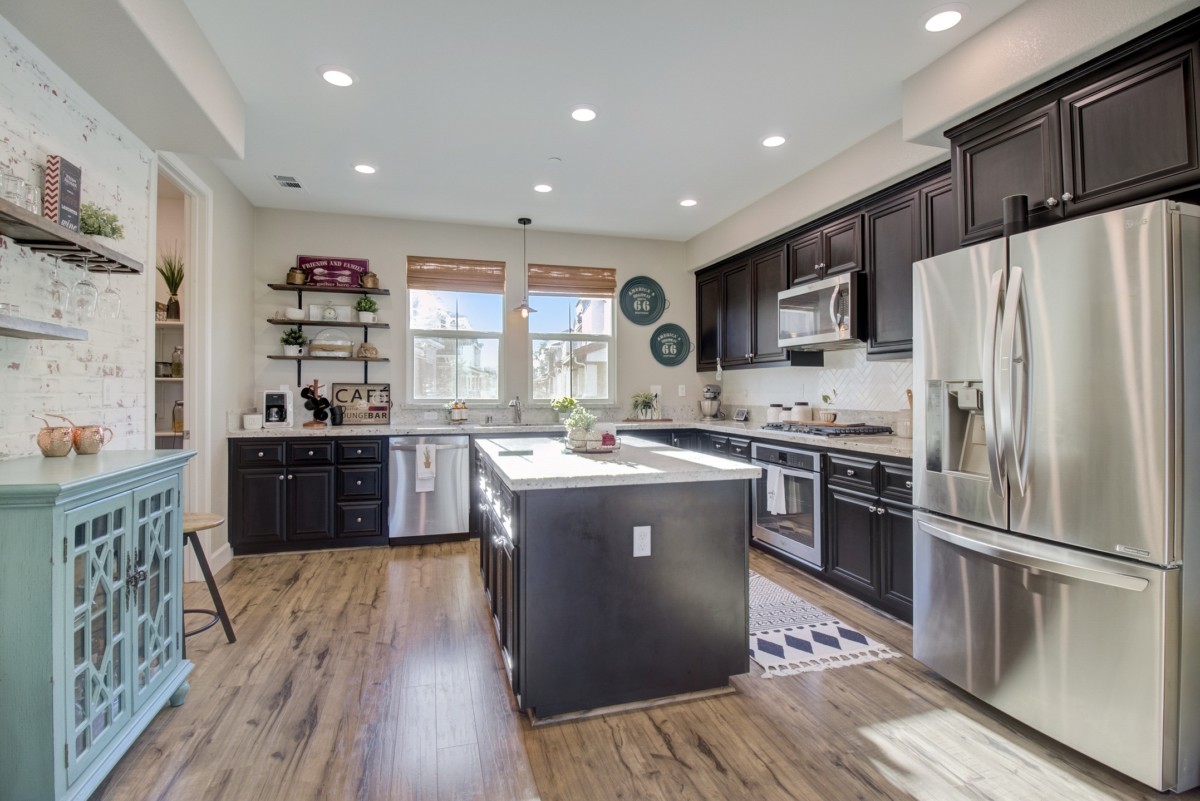
If you’re craving a look that’s both welcoming and nostalgic, consider classic farmhouse interior design. Though it’s often referred to as vintage, rustic, country, or traditional, this design style takes a more minimalist approach to create a cozy interior without being overdone. Natural wood, vintage pieces, neutral colors schemes in grays, beiges, and creams, are commonly used when decorating in this design style. And because comfort is key with classic farmhouse interior design, large furniture with plenty of comfy seating is used to pull a room together.
11. Modern Farmhouse
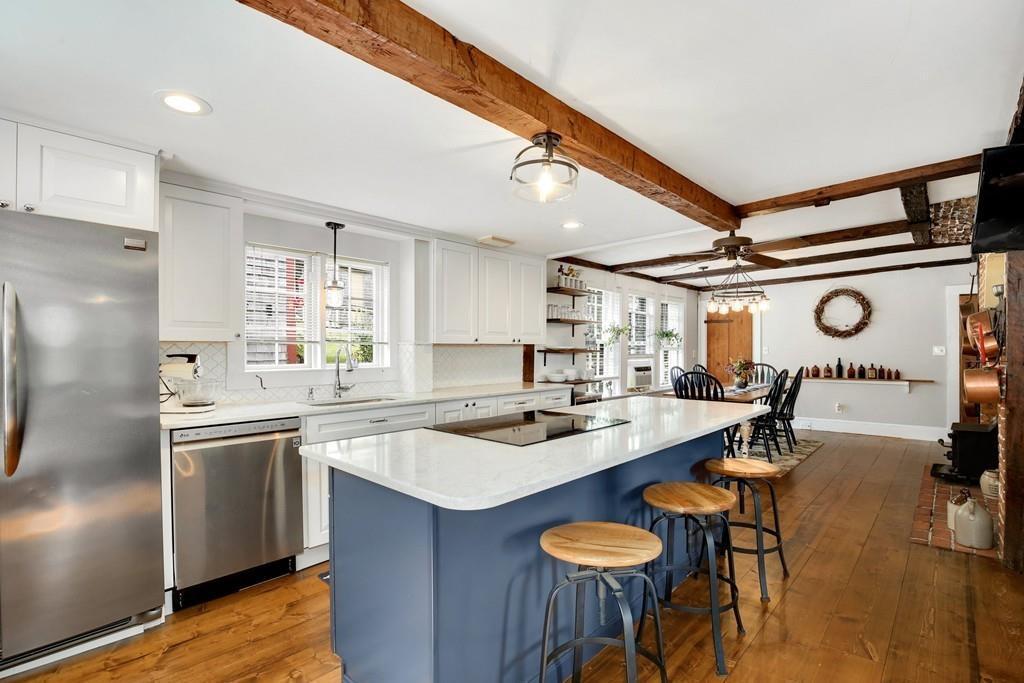
Putting a modern twist on the classic farmhouse, modern farmhouse interior design uses smooth lines, neutral color schemes, and contemporary accents to create a less rustic look than its classic counterpart. This design style has all the comfortable and relaxed touches of the traditional farmhouse but with a sophisticated twist. Industrial touches, such as stainless steel appliances and sleek lighting, are featured prominently in this design style to give a comfortable look without being kitschy.
12. Industrial
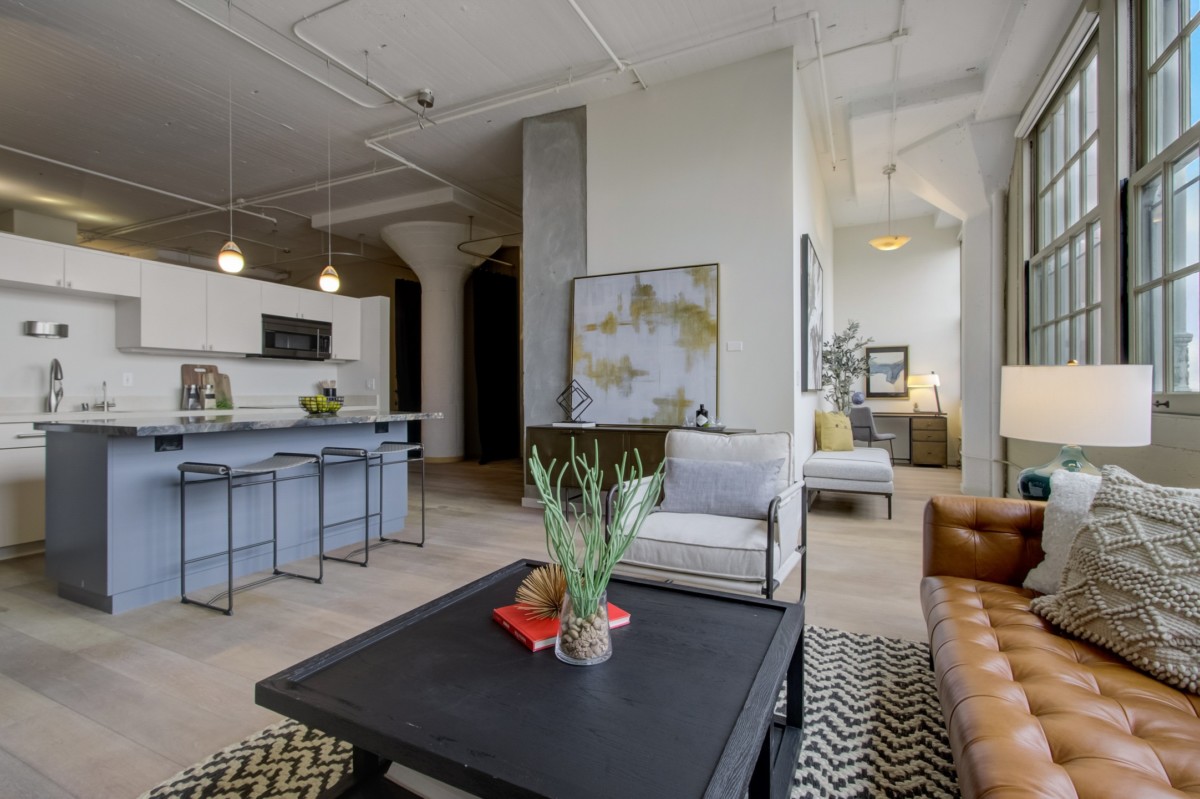
Industrial interior design is all about highlighting the bones of a space. Instead of covering up ductwork, pipes, and original brick walls, industrial design highlights these features to create a modern and edgy look. Moody and neutral color palettes, industrial materials, such as stainless steel, concrete, and metal, open spaces, and unfinished flooring are key characteristics of this design style. Although its often associated with converted lofts and warehouses in places such as Chicago, IL, or New York City, elements of industrial interior design can be incorporated into any type of home.
13. Scandinavian
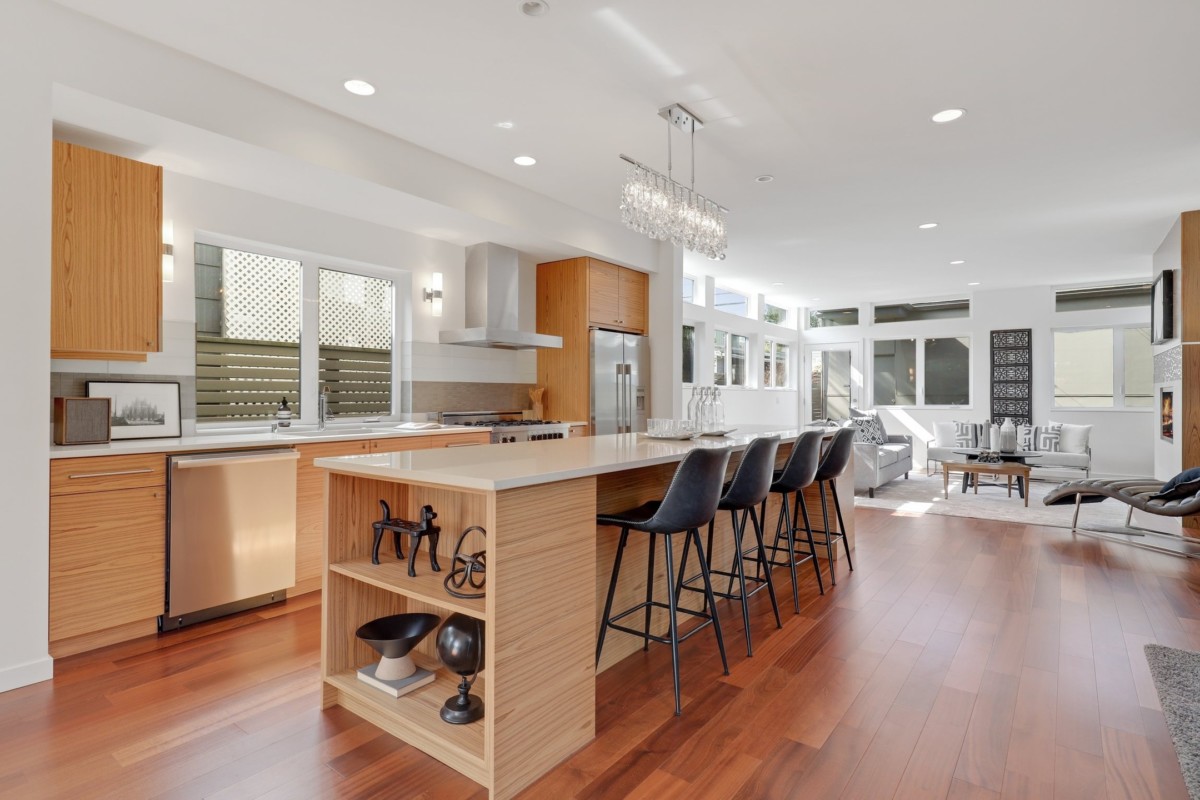
Far from being sparse, Scandinavian interior design strikes the right balance between cozy accents and uncluttered space to create a space that’s still sleek and modern. This design style often features a blend of textures, soft hues, simple furnishings, and clean lines to create a minimalistic look that’s warm and inviting. Hygge is an essential element when achieving Scandinavian design and is what sets it apart from minimalist interior design. Natural materials, soft textiles, and warm lighting all go hand-in-hand in creating the ultimate tranquil interior.
14. Shabby Chic
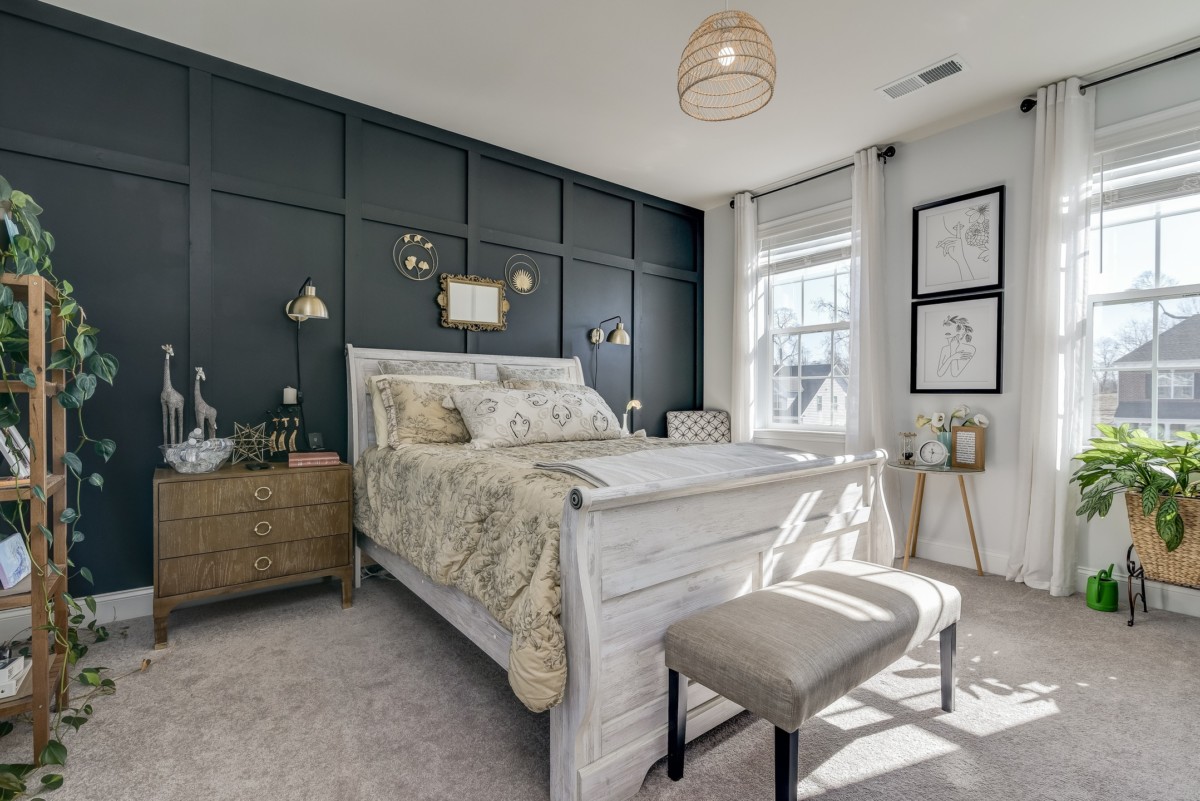
Shabby chic interior design embraces creating a space filled with age-old charm and comfort. True to its name, this design style celebrates a relaxed, well-worn look that gives spaces character and personality. Classic shabby chic homes feature vintage accessories, comfy fabrics (such as white cotton and linen), soft hues, and worn furniture to give spaces a signature antique look. When styling a shabby chic space, mix and match furnishings and decor elements to create a haphazard look that still feels cozy.
15. French Country
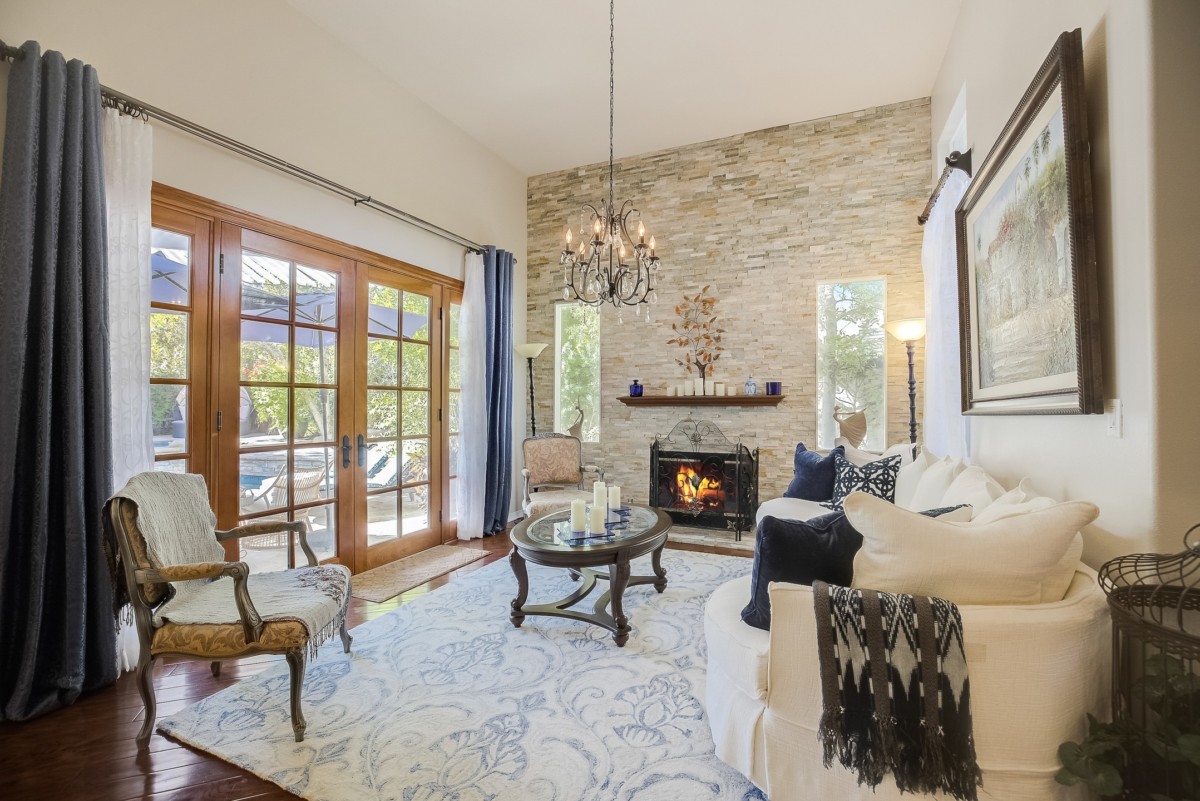
French country interior design features a mix of rustic and refined decor inspired homes in Southern France, particularly in the Provence region. French country homes are often characterized by distressed wooden furniture, patterned fabric (such as toile), natural color palette (in hues of soft yellows and blues), and natural elements. The mix of these decor elements creates a welcoming and lived-in yet elegant space. Don’t forget to accessorize as french country interior design focuses on ornamental accessories to create interesting focal points throughout the home.
16. Coastal
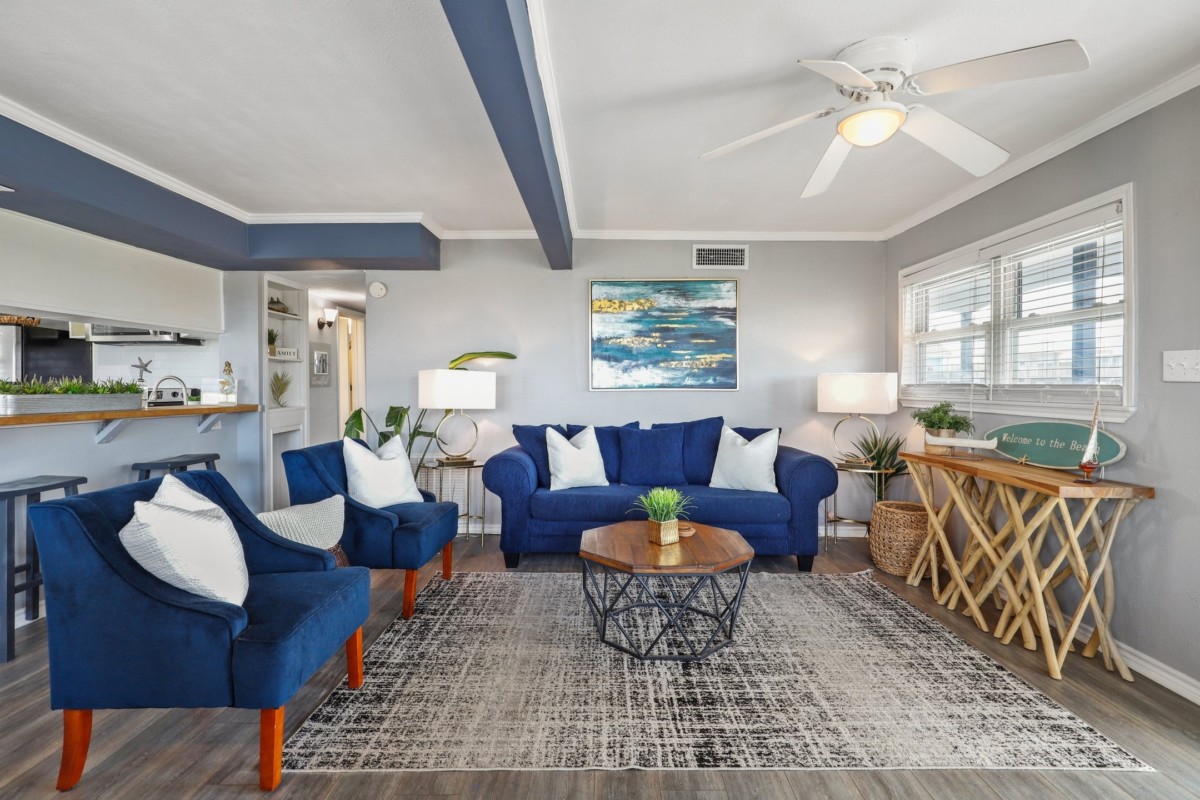
Laidback and casual, the coastal interior design style creates a space with a calming atmosphere, inspired by a relaxing day at the beach. This design style pairs lighter tones in shades of white, blue, green, and beige with natural textures to create a cozy interior. Wicker and driftwood furnishings along with linen fabrics are common elements found in coastal interior design, with nautical themes dotted throughout the space.
17. Art Deco
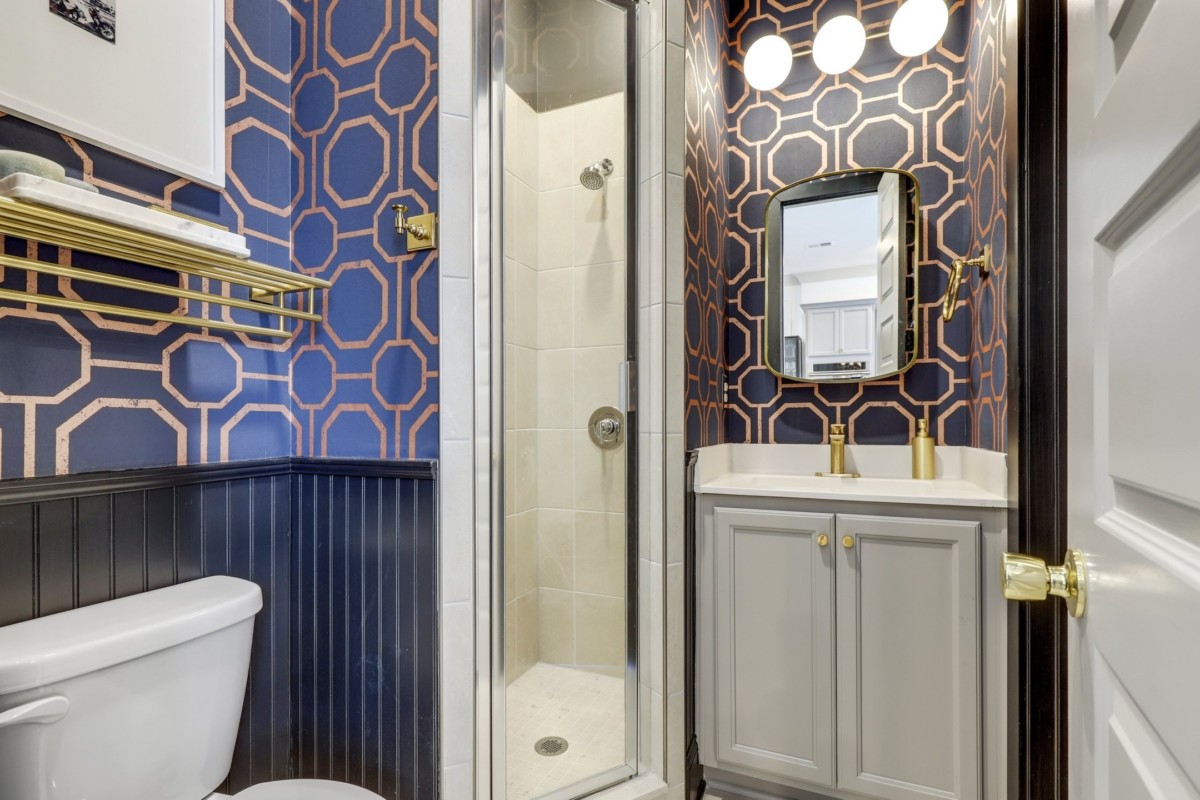
If you’re familiar with “The Great Gatsby” chances are you’re familiar with elements of art deco interior design. Incorporating all the glamour and extravagance of the Roarings ’20s, this iconic design style is famous for its symmetry, geometric patterns, and luxurious finishes. Art deco interior design is a bold, glamorous style that incorporates vintage elements for a one-of-a-kind look. Key characteristics of art deco interior design include pops of bold jewels tones, upscale fabrics, such as velvet, sleek finishes, sculptural furnishings, and statement lighting.
18. Desert Modern
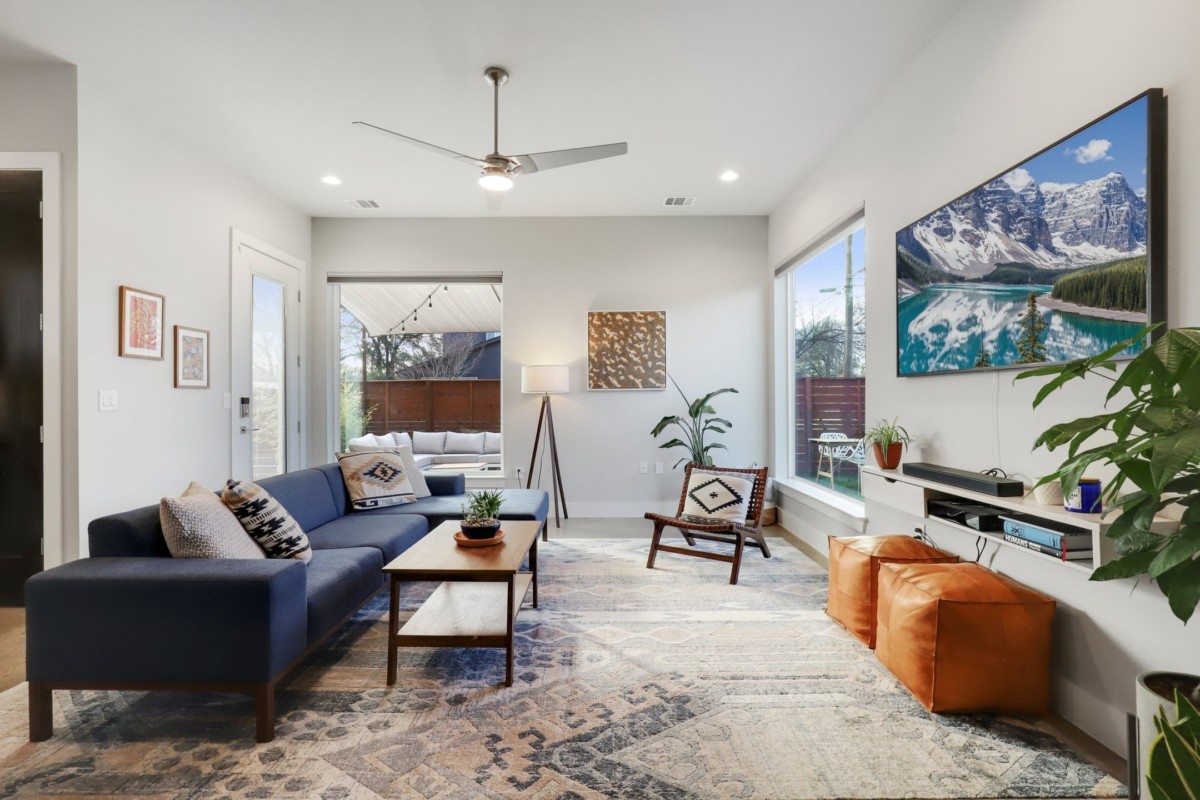
Inspired by hot desert destinations, such as Joshua Tree, desert modern interior design brings the outside in to create the ultimate serene sanctuary. This design style is characterized by an earthy color palette that emulates natural colors, layered textiles, organic forms, artisan-made decor, and plenty of natural textures. Top off the desert modern look with plenty of houseplants to add fresh touches of greenery and tie the space together.
19. New Mediterranean
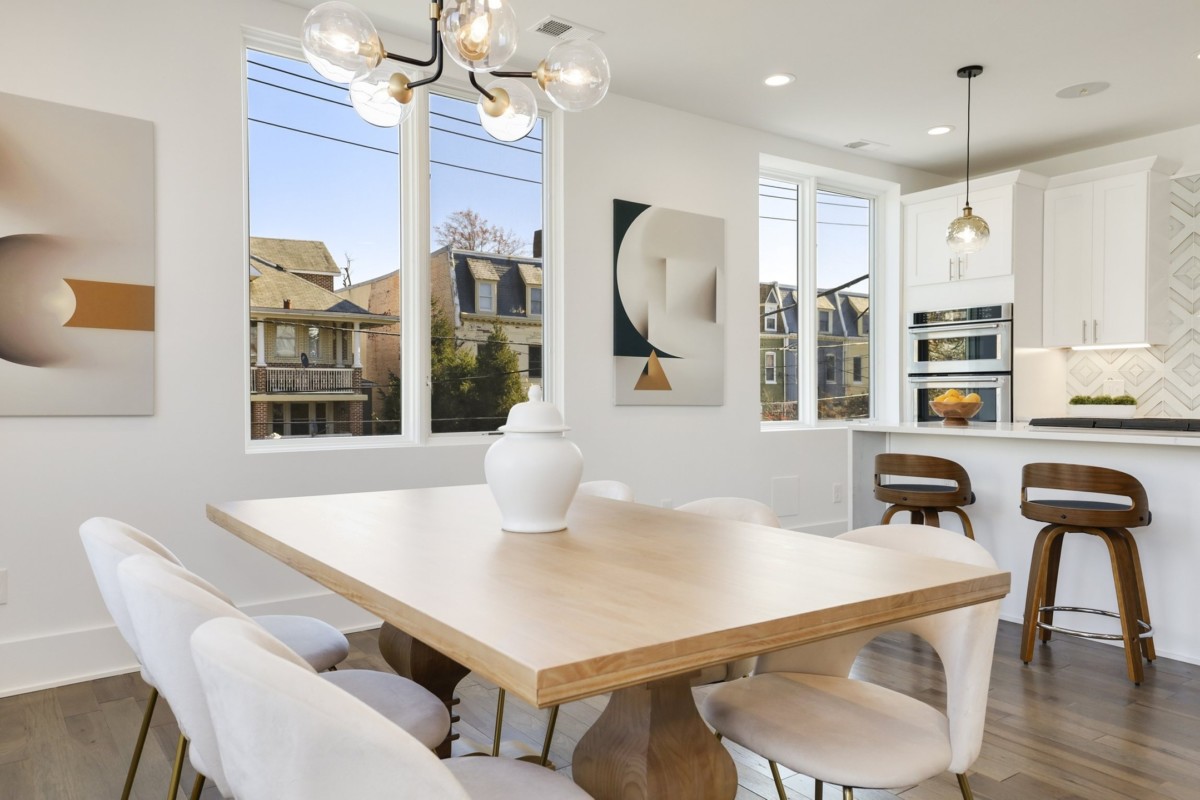
The new mediterranean interior design style incorporates pared-back earthy tones with colorful fabrics and whitewashed walls to create an elegant and welcoming interior. Like desert modern interior design, new meditteranean interior design offers an alternative to those looking to warm up minimalist spaces, with handmade ceramics, glass, and rattan are often used to accessorize and add visual interest. Texture is a key element in bringing the space together, with marble, sandstone, linen, wood, and touches of velvet or boucle, adding just the right amount of warmth.
20. Hollywood Regency
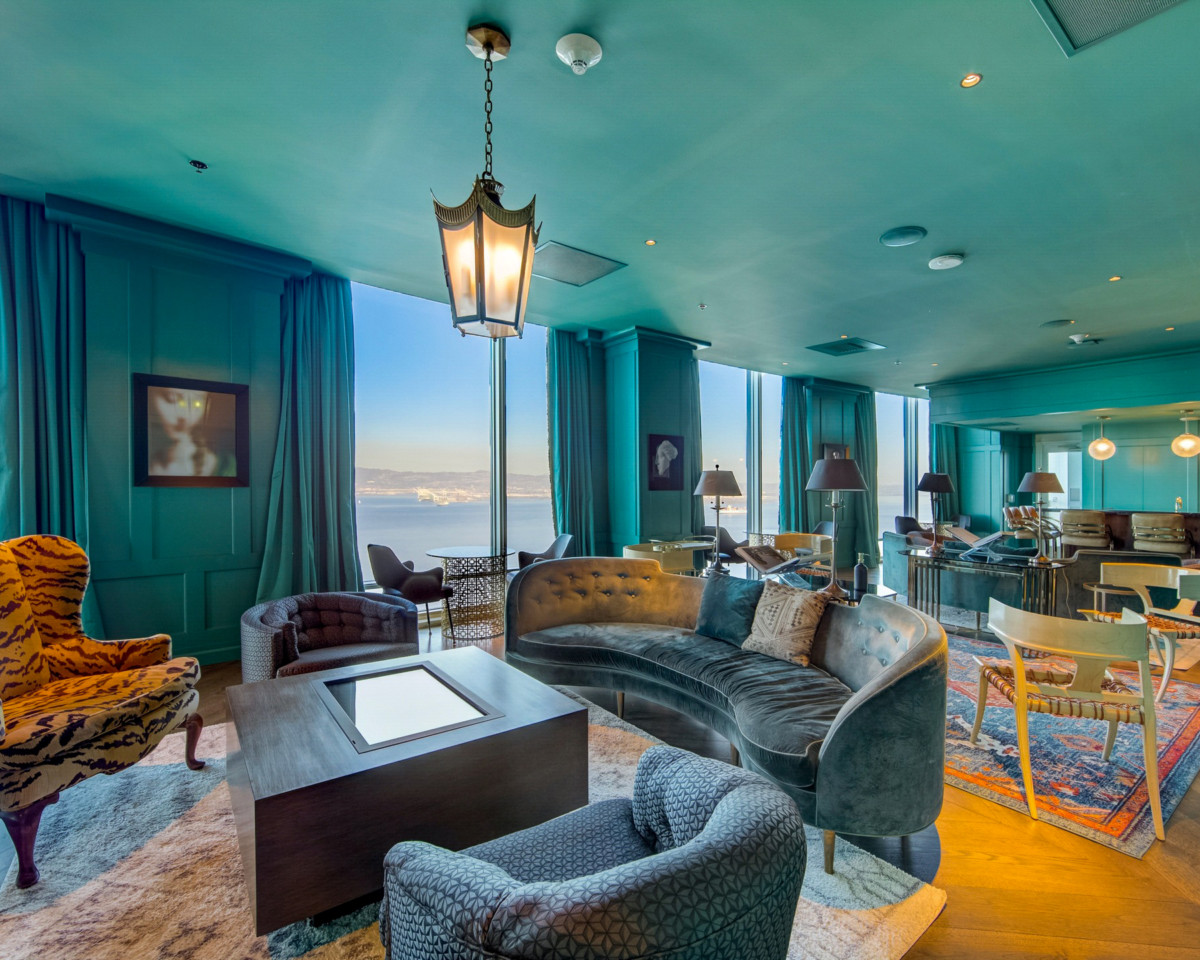
Hollywood regency (also known as regency moderne or Hollywood glam) is an interior design style inspired by Hollywood’s Golden Era from the 1920s to the 1950s. Combining elements of art deco and mid-century modern interior design, this design style celebrates different textures, colors, and patterns to create an over-the-top look. Mirrored furniture or walls, accent mirrors, lacquered finishes, leather pieces, animal print, and bursts of bold color and pattern, are all hallmarks of Hollywood regency. Following the philosophy of “more is more,” there’s no such thing as an overcomplicated or stuffy space.
21. Southwestern
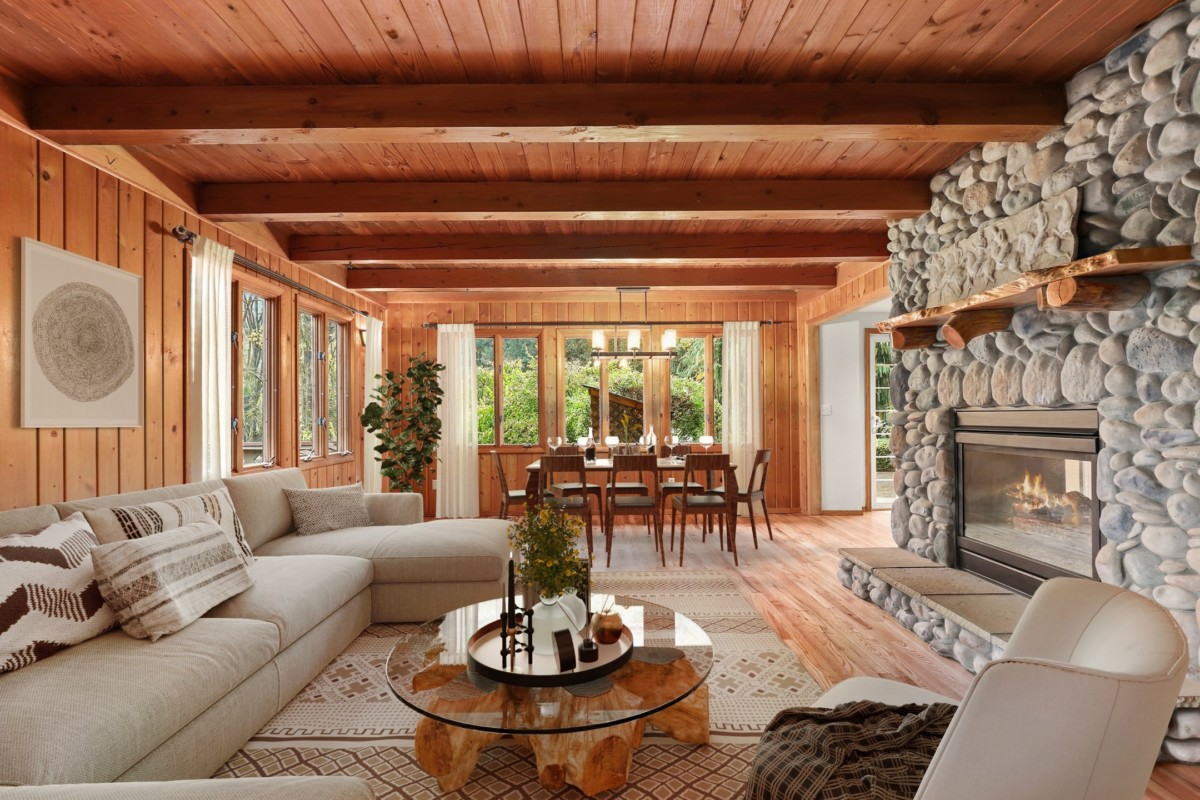
Bringing a rustic and cozy look to any space, southwestern interior design features earth tones and natural elements reminiscent of the “wild west.” Colors in southwest interior design are inspired by natural colors found in the desert, with pops of colors coming from natural stones and dyes. Weathered leather and dark wood are commonly used in furnishings to add a retro feel. Crafty or handmade-inspired pieces, such as woven rugs, ceramics, and tapestries are also featured in southwest homes, with Spanish mosaic tiles being the focal point of the space.
22. Bauhaus
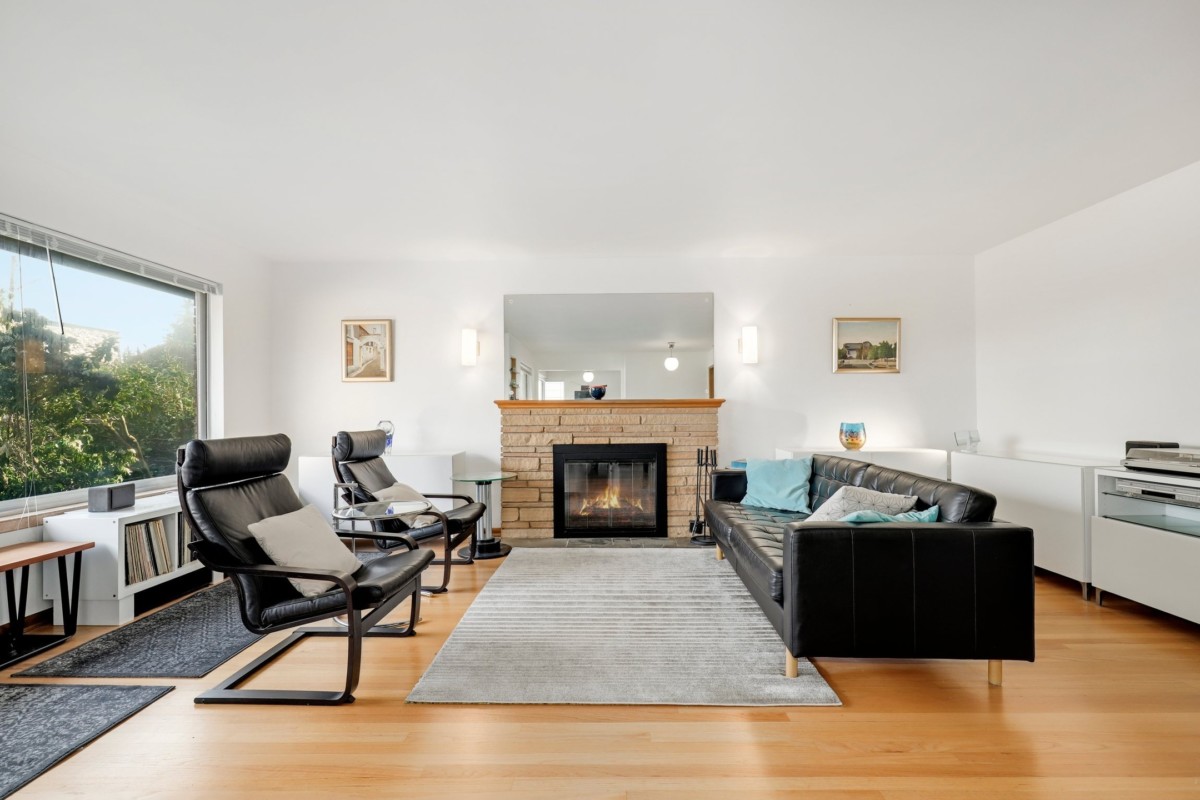
The Bauhaus interior design style adheres to the principle of “form follows function.” This design style is famous for its lack of ornaments, simple and clean lines, smooth surfaces, and geometric shapes. To embody Bauhaus interior design, look for decor elements in “simple shapes,” such as triangles, circles, and squares, and stick to bold primary colors to add visual interest. Furnishings should serve a purpose and ideally be multifunctional to showcase the beauty of a simple form.
23. Tropical
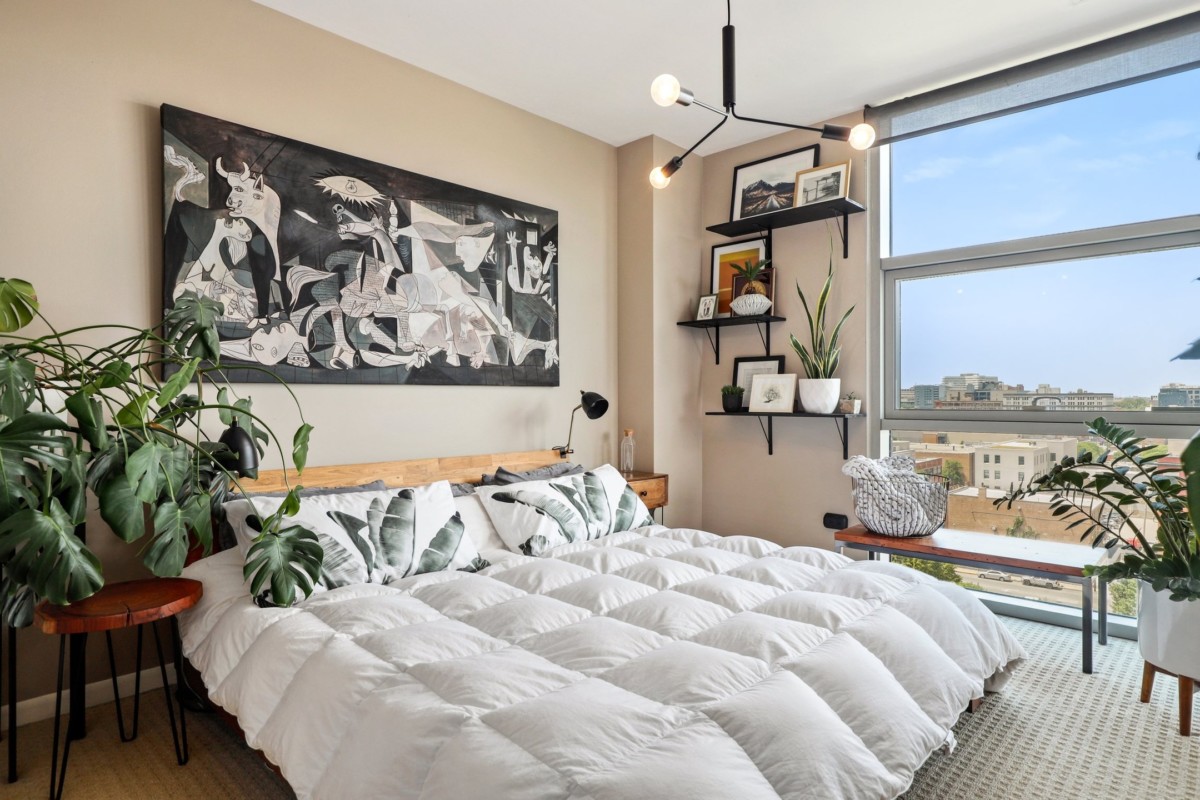
A bright, bold, and colorful counterpart to coastal design, tropical interior design features a fun and playful aesthetic. This design style features natural materials, such as wicker, bamboo, or rattan, plants, tropical leaf, and palm tree motifs, and a soothing color palette of greens and blues. When choosing fabrics, stick to lightweight materials like cotton or linen to enhance the effortless vibes of tropical interior design.
24. Vintage
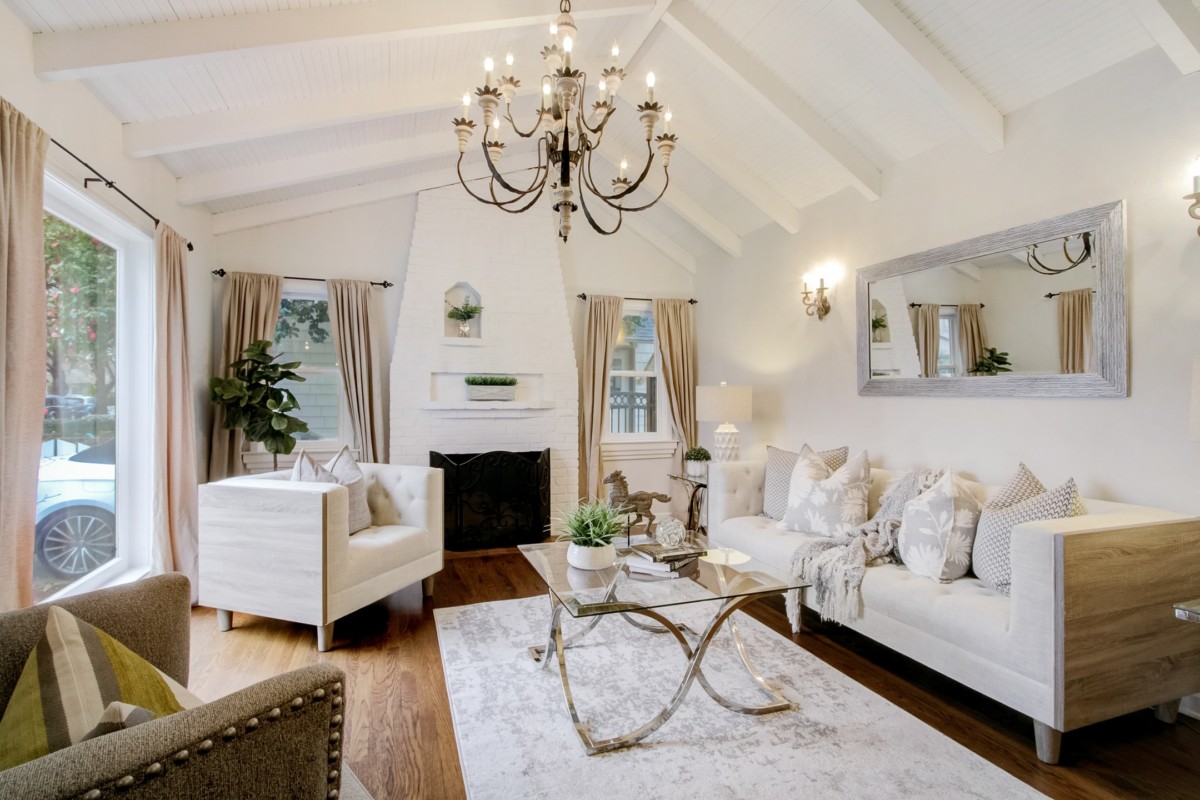
The vintage interior design style incorporates furnishings, accessories, and color palettes from earlier periods. Instead of perfecting a pristine, carefully curated interior, vintage interior design finds its appeal in creating the perfect blend of old meets new. Pastel colors, well-made antiques, plenty of textures, and upcycled furnishings are bedrocks of vintage interior design, with hand-me-downs commonly used as decor elements to add the perfect nostalgic touch.
25. Urban
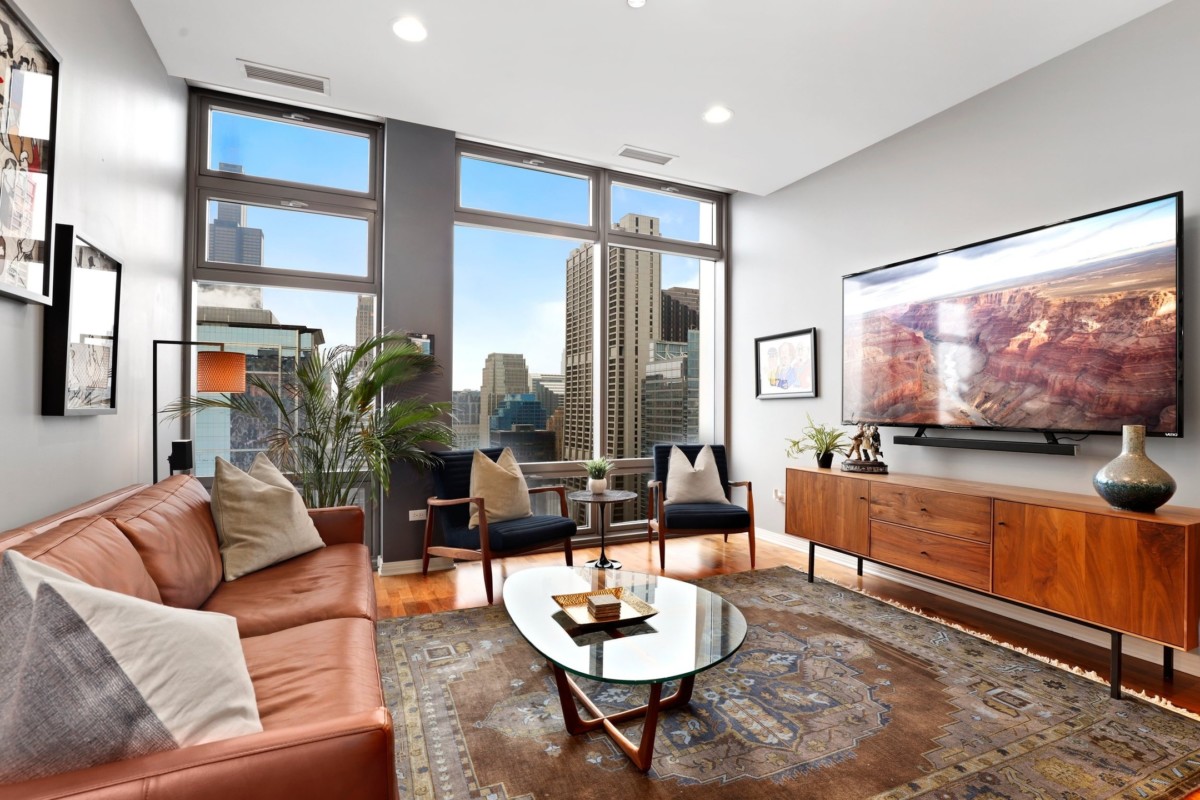
Urban interior design combines elements of contemporary, modern, and industrial designs to create a unique style that’s a softer, more comfortable take on urban living. A perk of this design style is that it also makes the most of small spaces to create functional living areas. Urban interior design is all about creating a lived-in yet chic home with light colors and clean finishes, minimalistic furniture with sleek lines, vintage decor, cozy furnishings, and geometric designs. Statement pieces are key to bringing personality into a space, whether it’s through a bold accent wall or an interesting art piece.
The post 25 Popular Interior Design Styles Defined appeared first on Redfin | Real Estate Tips for Home Buying, Selling & More.
